Service Provider Routing and Switching v7.0
Question 1
You are working with a new MPLS network that is using the default EXP classifier and default schedules A small amount of traffic is being placed in the assured forwarding class.
No other traffic is passing through the network at this time
In this scenario, what happens to the traffic that is being placed in the assured forwarding class?
- A. The traffic is reclassified to the best effort forwarding class and is forwarded.
- B. The traffic remains in the assured forwarding class and is forwarded.
- C. The traffic is reclassified to the network control forwarding class and is forwarded
- D. The traffic remains in the assured forwarding class and is dropped.
Answer : B
Question 2
Which routing instance type is used with a Layer 3 VPN?
- A. I2vpn
- B. virtual-switch
- C. vrf
- D. vpls
Answer : C
Question 3
Click the exhibit button -
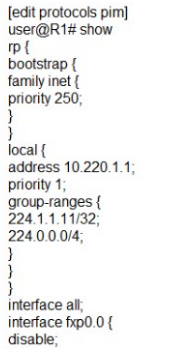
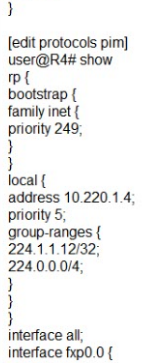

Referring to the exhibit,whichrouter will be the RP?
- A. R4 for all groups
- B. R1 for group 224.1.1.11 and R4 for all other groups
- C. R1 for all groups
- D. R4 for group 224.1.1.12 and R1 for all other groups
Answer : A
Question 4
PE1 and PE2 provide a BGP-signaled VPLS service named VPN Blue. PE1 has site ID 2. label base 2500, and label offset 1.PE2has site ID 4, label base 3000, and label offset 1
Which label does PE2 expect to receive on VPLS VPN Blue traffic received fromPE1site ID
2?
- A. 2505
- B. 5499
- C. 2503
- D. 3001
Answer : C
Question 5
Which statements are true about NG MVPNs? (Choose two.)
- A. NG MVPN membership is signaled between PEs using PIM?
- B. Every NG MVPN PE router builds a selective provider multicast service interface tunnel to every other router in the same NG MVPN
- C. NG MVPN membership is signaled between PEs using MP-BGP.
- D. Customer multicast traffic can be transported over the provider network using point-to- multipoint MPLS LSPs.
Answer : BD
Question 6
A new service provider asked you to design its IS-IS network. You determined that two distinct IS-IS areas will be required and you must now create an ISOaddressing plan for the participating intermediate systems (routers)
In this scenario, which two statements are correct? (Choose two.)
- A. The NET addresses can be configured on any interface.
- B. The NET addresses must be configured on the loopback interface
- C. The system ID within the NET address must match for all intermediate systems within the same area.
- D. The system ID within the NET address must unique for all intermediate systems within the same area.
Answer : A,D
Question 7
Click the Exhibit button.
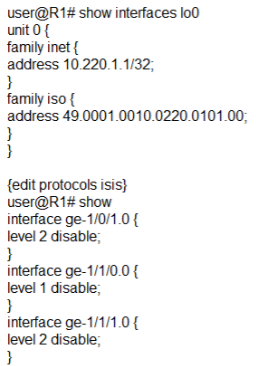
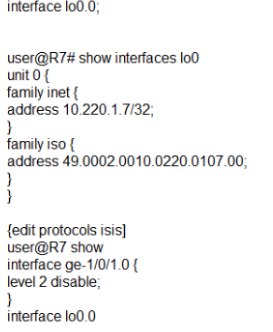
You are trying to establish an ISIS Level 1 adjacency over ge-1/0/1 between R1 and R7 without impacting the other IS-IS adjacencies on R1. Which configuration change would satisfy this requirement?
- A. Disable Level 2 globally on R7.
- B. Change the area on R7 to match R1.
- C. Disable Level 2 globally on R1.
- D. Change the area on R1 to match R7.
Answer : B
Question 8
Click the Exhibit button -

Referring to the exhibit, which LDP Layer 2 circuit configuration on PE1 maps traffic to an
LSP destined to the secondary loopback address of PE2?
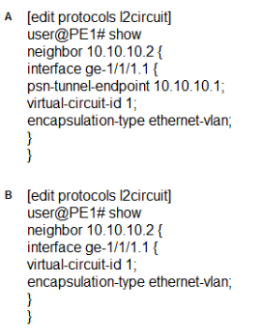
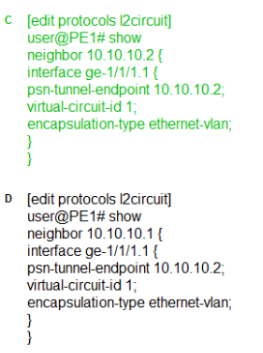
- A. Option A
- B. Option B
- C. Option C
- D. Option D
Answer : C
Question 9
Click the Exhibit button -
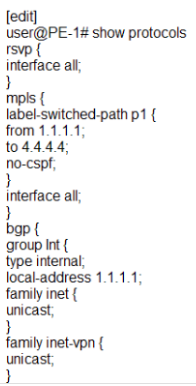
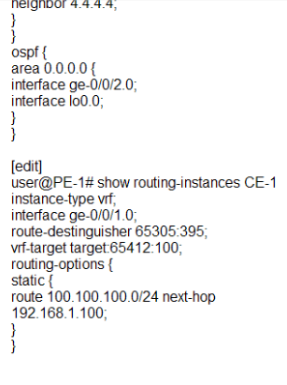
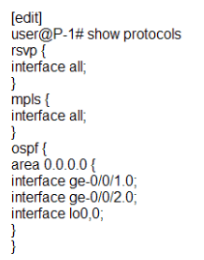
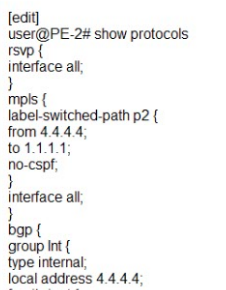
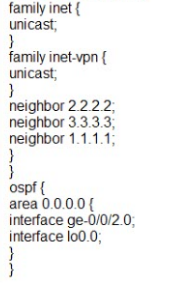
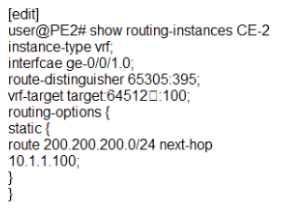
Referring to the exhibit, you have configured an L3VPN that connects Site-1 and Site-2 together, but the BGP routes are not showing up on the PE routers. The topology in this scenario is shown below
Site-1>PE-1>P-1>P-2>PE-2> Site-2
Which action should you take to allow communication between Site-1 and Site-2?
- A. Enable LDP for all interfaces on all routes,
- B. Change the route distinguisher to be different on PE-1 and PE-2-
- C. Change the route target to match on PE-1 and PE-2
- D. Configure BGP on P-1 and P-2.
Answer : A
Question 10
Click the Exhibit button -
R1 is exporting 2000:FEFE:100::/64 to R2 over the EBGP peering session as shown in the exhibit

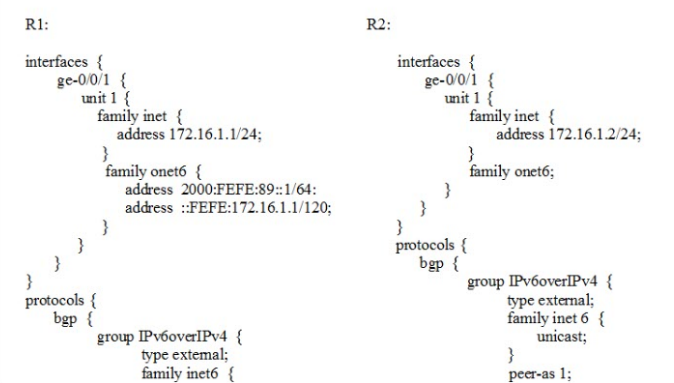

What will R1 use for this route'sprotocol next hop when advertising it to R2?
- A. 2000:FEFE:89::1
- B. 172.16.1.1
- C. 10.1.1.1
- D. ::FFFF:172.16.1.1
Answer : B
Question 11
You need to ensure that your high-priority traffic uses the best-possible route while your best-effort traffic uses a lower preference route. You want to use CoS-based forwarding to use the DSCP values of the different types of traffic to assign the LSP that should be used for the next hop
Which three additions must be made to the configuration to satisfy the requirement?
(Choose three.)
- A. a class-of-serviceforwarding policy
- B. a policy statement for LSP next-hop selection
- C. an important policy applied to the forwarding table
- D. an export policy applied to the forwarding table
- E. a multifield firewall filter for LSP next-hop selection
Answer : A,D,E
Question 12
Click the Exhibit button.
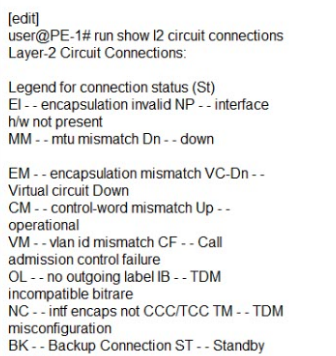
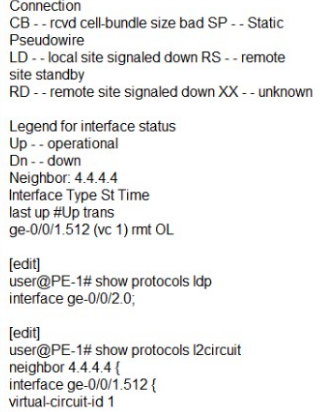
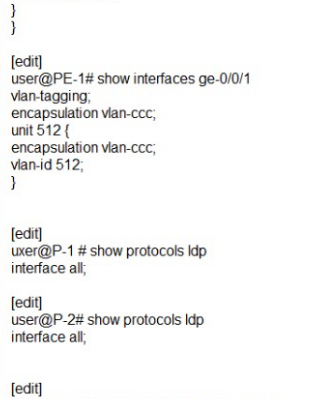
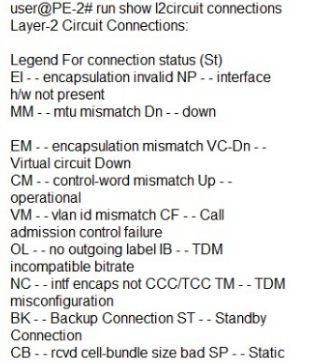
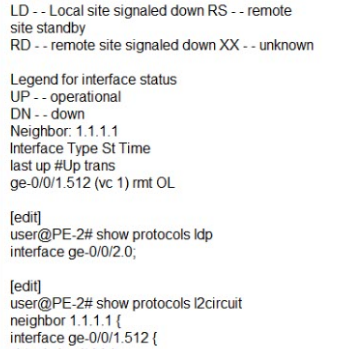
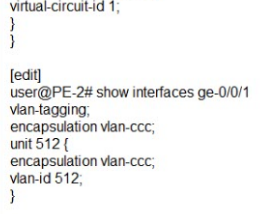
Referring to the exhibit you have configured an L2 circuit that connects Site-1 and Site-2, but the L2 circuit is not functioning The topology in this scenario is shown below.
Site-1 > PE-1 > P-1 > P-2 > PE-2 Site-2
Which action will allow communication between Site-1 and Site-2?
- A. Change the virtual circuit identifier to 2 for PE-2.
- B. Add the family inet statement under the ge-0/0/1.512 interface for PE-1 and PE-2.
- C. Add the lo0 interface under the {edit protocols Idp} hierarchy for all routers.
- D. Add the lo0 interface under the {edit protocols 12circuit} hierarchy for PE-1 and PE-2
Answer : C
Question 13
Click the exhibit button -
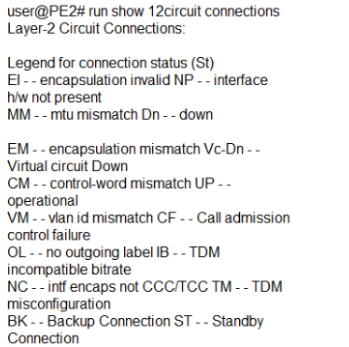
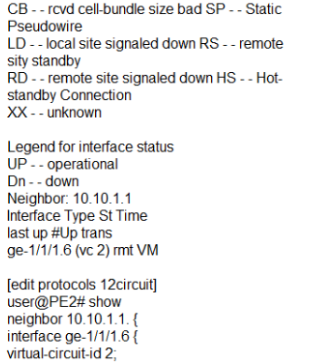
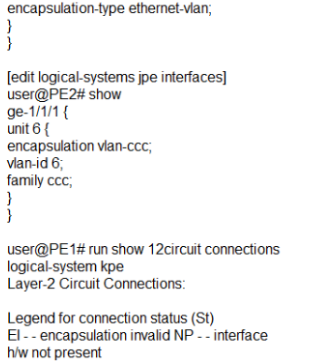
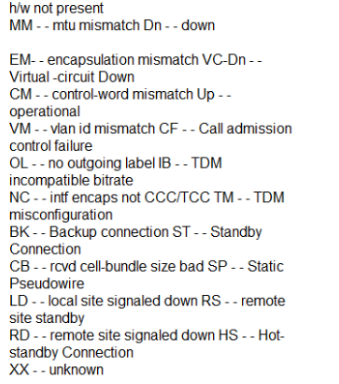
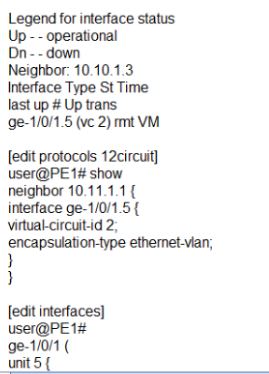

An LDP Layer 2 circuit between PE1 and PE2 is not passing traffic. Both PE1 and PE2 show the circuit state as VM - - vlan id mismatch.
Referring to the exhibit, which action will solve this problem?
- A. Configure interfaces PE1:ge-1/071.5 and PE2:ge-1/1/1.6 with the output-vlan-map pop parameter.
- B. Configure interfaces PE1 :ge-1/0/1.5 or PE2:ge-1/1/1.6 with the output-vlan-map swap parameter.
- C. Configure the LDP Layer 2 circuit with the no-control-word command on PE1 and PE2.
- D. Configure interfaces PE1 :ge-1/071.5 and PE2:ge-1/1/1.6 with the output-vlan-map swap parameter.
Answer : D
Question 14
Which routing instance type is used with a Layer 2 VPN?
- A. 12vpn
- B. vrf
- C. no-forwarding
- D. virtual-switch
Answer : D
Question 15
Which two statements are true about route leaking in a Level 1 -Level 2 network environment? (Choose two.)
- A. Level 1 internal routes can be leaked into Level 2. but require a policy.
- B. Level 1 external routes are leaked into Level 2 without a policy if the wide-metrics parameter is configured.
- C. Level 2 internal routes can be leaked into Level 1, but require a policy.
- D. Level 2 external routes are leaked into Level 1 without a policy if the wide-metrics parameter is configured
Answer : BC